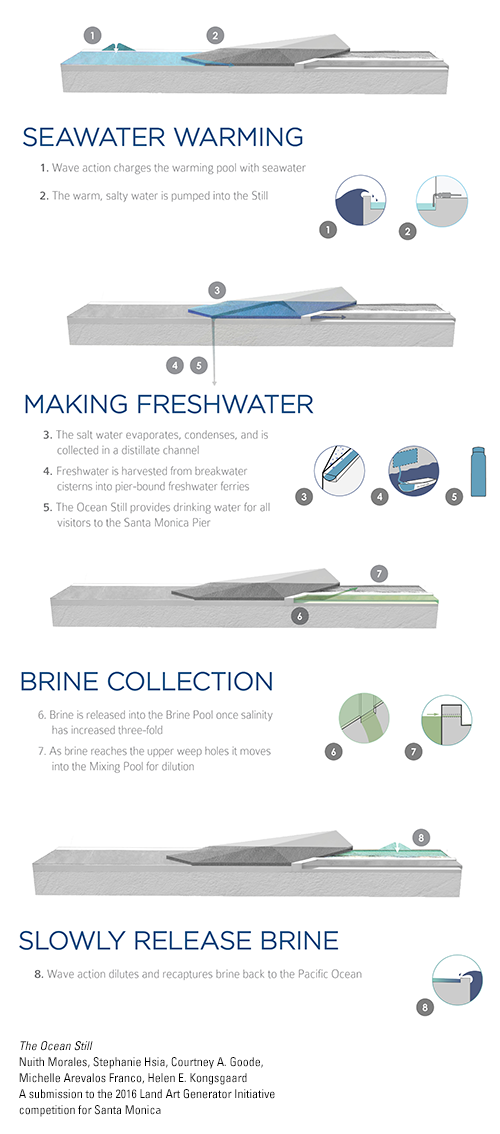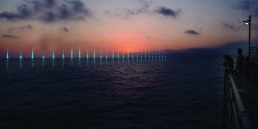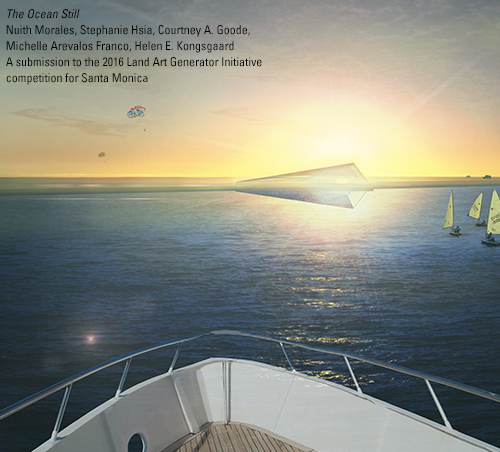
The Ocean Still: Lagrimas de Santa Monica, a submission to the 2016 Land Art Generator Initiative design competition for Santa Monica
Artist Team: Nuith Morales, Stephanie Hsia, Courtney A. Goode, and Michelle Arevalos Franco
Artist Location: Boston, USA
Energy Technologies: Solar Distillation
Annual Capacity: 9 million liters of drinking water
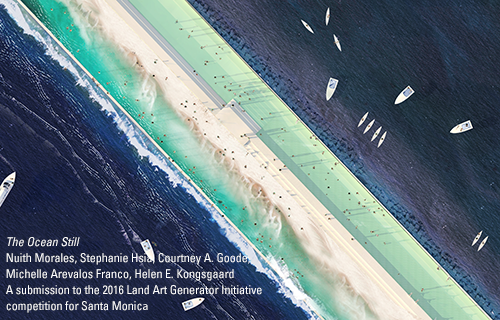
The twin springs that inspired Santa Monica’s name were fabled to be the tears of a saint. At a time of growing thirst in California, The Ocean Still augments this sacred source of water by transforming seawater into fresh water, using only the energy of the sun. A large, transparent enclosure—a solar still perched on the old breakwater—makes a surface for collecting the saint’s pure tears once again. This simple, pre-modern technology concentrates sunlight, distills saltwater, and condenses fresh water on a glass shell. The entire breakwater structure, including the passive solar still and its complex of pools, celebrates the many forms of water as well as the residue of desalination.
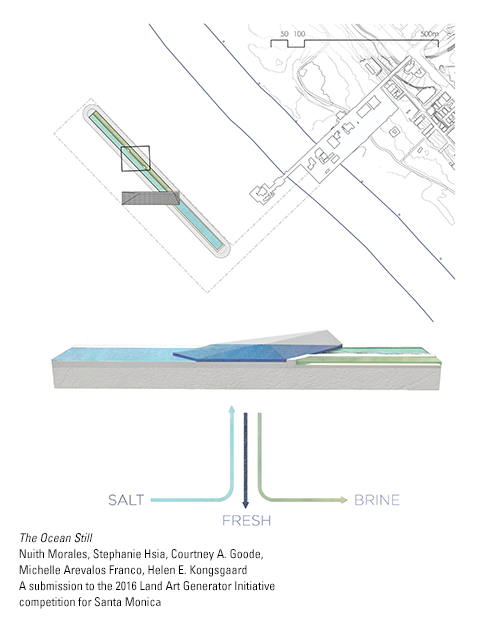
Fusing urban needs and pleasure, the expanded breakwater complex recalls the history of the Santa Monica Pier as municipal sewage utility and its vital role in urban metabolism. Now, as before, the processes that make city life possible are tied to entertainment and destination—water production as spectacle.
Inside the “still” solar radiant heat is absorbed and concentrated. The seawater evaporates. As it condenses on the glass shell, a collection channel diverts the pure distillate into a cistern and to the pier. The angled glass walls face due south, absorbing maximum solar heat and exploiting the flow of prevailing westerly and southwesterly winds.
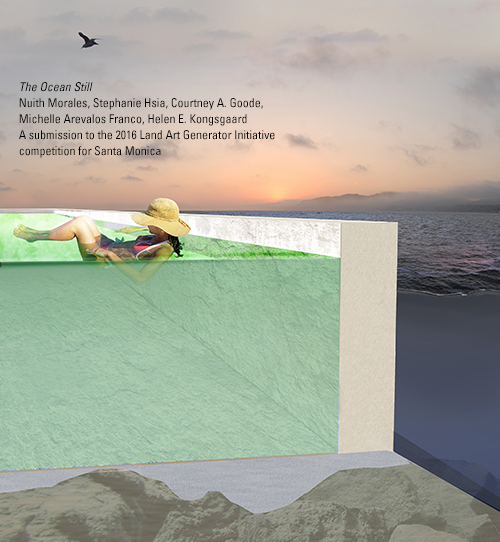
The concentrated saline brine that results from desalination exits from a low point into the “brine pool”—a long, deep swimming pool that induces the body to float. Swimmers churn the brine water with their movements, maintaining the water at a consistent density.

When the brine waters approach the pool’s capacity they flow onto the “mixing beach.” Here, short walls allow for waves to crash and stir the concentrate—brine mixing with seawater. This slow reclamation of diluted brine back to the Pacific Ocean prevents the dead zones associated with industrial desalination. The shallow slope of sand and gravel at the “mixing beach” creates a protected habitat for marine fauna, and an idyllic floating coast for California sunbathers.
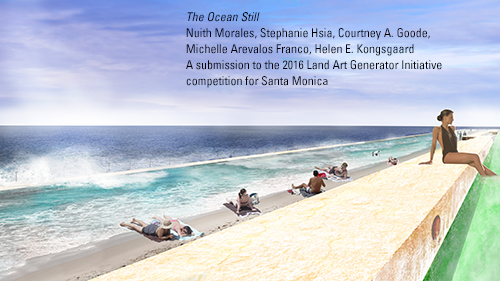
The Ocean Still encourages hope in simple technologies that will not readily become obsolete. Drought and thirst cannot be easily solved at the push of a button. Thoughtful interventions in our lives and landscapes, beyond providing solutions, have the capacity to engage the desires and delights of the senses.

